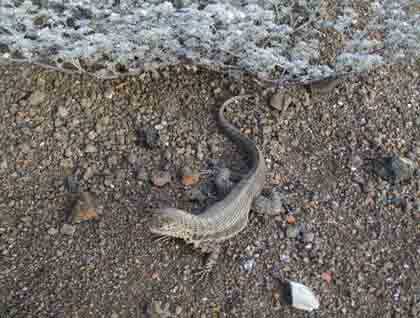After the National Geographic Endeavour has repositioned herself to the center part of the archipelago, we see the first light at 5:30 in the morning, revealing a very different setting than we have had for the last few days. We are anchored in Sullivan’s Bay, at the easternmost tip of James Island. This area has been subject to violent eruptions, and although these events date back from at least a century ago to several dozens of centuries ago, the topography makes one think it happened only yesterday.
Volcanic features get preserved for a relatively long time in Galápagos, for the climate is relatively stable and therefore maintains current conditions of the tuffs, basalts and cinders for many centuries to come. The only true damage to these rocks is in the all-time exposure to intensive sunlight and an occasional year of heavy rainstorms, such as during an El Niňo-Southern Oscillation event. Sunlight and heavy rain cause erosion, but are not as impactful as big storms and heavy seas, so common outside the tropics.
Bartholomew Islet sits just north of an enormous lava flow, which produces a local high pressure. Therefore, any rain brought by the southern trade winds will more often than not skip Bartholomew. The little vegetation this islet hosts, thoughtfully named the Grey Mat Plant, evolved to survive long droughts and intense heat. The tiny white flowers it produces are the primary food source for the local lava lizards, due to the lack of insects. It is thought that extra tough conditions like these speed up speciation, eventually leading to a new species. There are many of these pockets with their own micro climate in the archipelago.
We head out to walk to the top of Bartholomew before breakfast. It is a nice exercise while the air temperature is still relatively cool. After several hundred wooden steps the reward is an emblematic and detailed view, and our guests are snapping away trying to capture all that beauty in the best way possible.
After we are back on board for breakfast, there is a new outing, this time to a small golden colored beach where we will snorkel in clear, calm water. It makes great conditions to admire the wide variety of corals and reef fish, an occasional white-tipped reef shark, and even a Galápagos Penguin, although the latter is, for many snorkelers, too swift to follow.
During lunch the ship moves towards our afternoon stop, a small islet called Chinese Hat. The same stark volcanic features dominate our view, and once more we head out for snorkeling. This time many of us have a more lasting encounter with penguins, since there are several in the calm waters, seemingly careless about our presence, hunting the small anchovies that litter our underwater view.
Back on board we get ready for a Zodiac ride along the coast of Chinese Hat and James Island, where we spot crab-hunting shore birds, roosting Galápagos penguins, and sea lions, all in the forgiving yellow light of the oncoming sunset.









